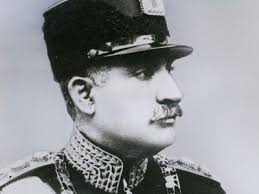This short book is exactly what the subtitle promises in the inimitable style of Kurt Vonnegut. The title quote is also the theme of the book:
“My Uncle Alex, who is up in Heaven now, one of the things he found objectionable about human beings was that they so rarely noticed it when times were sweet. We could be drinking lemonade in the shade of an apple tree in the summertime, and Uncle Alex would interrupt the conversation to say, "If this isn't nice, what is?
So I hope that you will do the same for the rest of your lives. When things are going sweetly and peacefully, please pause a moment, and then say out loud, "If this isn't nice, what is?”
Vonnegut puts being kind at the center of a good life:
“There’s only one rule I know of—Goddam it, you’ve got to be kind.”
But he is quite aware that for most people, hate motivates:
“It is a tragedy, perhaps, that human beings can get so much energy and enthusiasm from hate. If you want to feel ten feet tall and as though you could run a hundred miles without stopping, hate beats pure cocaine any day. Hitler resurrected a beaten, bankrupt, half-starved nation with hatred and nothing more. Imagine that.”
Vonnegut loved growing up in Indiana, the schools he attended and the teachers he had:
“A show of hands, please: How many of you have had a teacher at any stage of your education, from the first grade until this day in May, who made you happier to be alive, prouder to be alive, than you had previously believed possible? Good! Now say the name of that teacher to someone sitting or standing near you. All done? Thank you, and drive home safely, and God bless you all.”
In his many books and articles he fulfilled what is my favorite quote from the book:
“The function of the artist is to make people like life better than before.”
For the rest of us, art is good for our souls:
“Practicing an art, no matter how well or badly, is a way to make your soul grow, for heaven’s sake. Sing in the shower. Dance to the radio. Tell stories.”
First 22 books of 2022:
The War That Made the Roman Empire: Antony, Cleopatra, and Octavian at Actium by Barry S. Strauss.
Civil Rights Baby by Nita Wiggins
Lecture's on Kant's Political Philosophy by Hannah Arendt
The Netanyahus by Joshua Cohen
Perelandra by C.S. Lewis
The Federalist Papers by Alexander Hamilton, James Madison and John Jay
First Principles by Thomas Ricks
Political Tribes by Amy Chua
Book of Mercy by Leonard Cohen
A Brief History of Earth: Four Billion Years in Eight Chapters by Andrew Knoll
Prisoners of Geography by Tim Marshall
Understanding Beliefs by Nils Nilsson
1776 by David McCullough
The Life of the Mind by Hannah Arendt
Civilization: The West and the Rest by Niall Ferguson
How to Fight Anti-Semitism by Bari Weiss
Unflattening by Nick Sousanis
Marie Curie by Agnieszka Biskup (en francais)
The Next Civil War by Stephen Marche
Fritz Haber, Volume 1 by David Vandermeulen














































